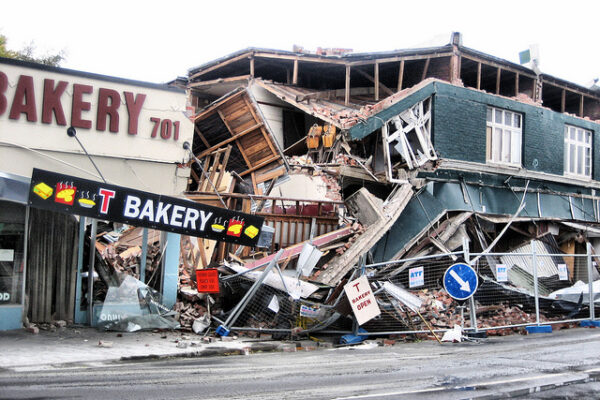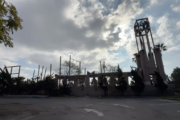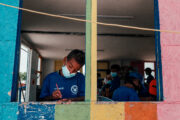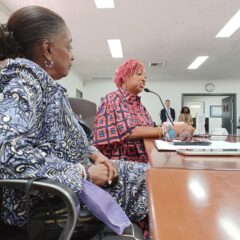This September marks the ninth annual National Preparedness Month, one of the many efforts our government has undertaken to engage whole communities in building disaster resiliency, including faith communities, citizen corps councils, VOADs (Voluntary Organizations Active in Disaster) and a variety of other community engagement models. Despite pleas by emergency managers and public health emergency practitioners, however, we are only now seeing some growth in a sustainable culture of preparedness. Building a culture of preparedness necessitates changing mindsets and getting people and organizations to “Make a Plan, Build a Kit, and Stay Informed,” before disaster strikes.
On September 11, 2001, I lived one block from the World Trade Center in Lower Manhattan and worked as the associate director of Episcopal Charities of the Episcopal Diocese of New York. The events of 9/11 fundamentally altered both my vocation and my view of disaster preparedness and response, which led to my becoming the executive director and CEO of New York Disaster Interfaith Services and, subsequently, president of the National Disaster Interfaiths Network (NDIN).
Billions of dollars and countless hours have been spent building our domestic emergency management and public health emergency infrastructure. Over the past decade, all VOAD organizations, including American faith communities have invested time, talent and treasure building their volunteer capabilities to respond to crisis. In recent years, NDIN and the USC Center for Religion and Civic Culture have formed a unique partnership to study the strategies used to engage faith communities in disaster management, to chart the success of those efforts, and to provide technical assistance for building the disaster preparedness and response capacity of faith communities—particularly in underserved and minority faith communities. Faith communities play a critical role in preparing for disasters, mitigating human suffering in response to disaster, and coordinating recovery post-disaster.
CRCC recently completed a study on the role faith communities play in the disaster management ecology of the state of California—including recommendations on how to build sustainable faith community disaster capacity and operational relationships. NDIN and CRCC are also preparing to publish a field guide for emergency managers and public health emergency practitioners, on how to engage faith communities and improve religious competency in crisis settings. This guide is being paired with primer on U.S. faith communities, containing data that disaster personal need to know about the beliefs, practices and functional needs of religious Americans in crisis and mass care settings. NDIN and CRCC are also working with California Volunteers to develop regional summits for California religious leaders to learn best practices, to build relationships with other faith leaders and public officials, to experience a disaster exercise, and to identify and build the capacities of their congregations to response to future hazards. We designed this summit format so that it can be replicated in other communities or states.
Our research has shown that successful partnerships between government agencies and faith communities require a significant level of religious literacy and competency—in addition to traditional understandings of cultural awareness. Beyond mere political correctness, this increased religious competency shows our neighbors and the global community that we share a national life and a willingness to understand and be respectful of beliefs, rituals, and history.
U.S. faith communities have proven their willingness and ability to serve the unmet needs of the public in times of crisis. The resources and knowledge of their communitiesallow them to play a unique role in disaster preparedness and response. But, they are often faced with ignorance and lack formal systems on which tobuild a sustainable culture of preparedness and resilience.
To that end, I am excited by our current work to engage faith communities in local disaster readiness, response, and recovery efforts.Together, we are learning, educating and engaging the academy, the government and faith communities in laying the groundwork for something vital to our national interests.
Peter Gudaitis is the president of the National Disaster Interfaiths Network (NDIN) and a guest contributor with the USC Center for Religion and Civic Culture.








